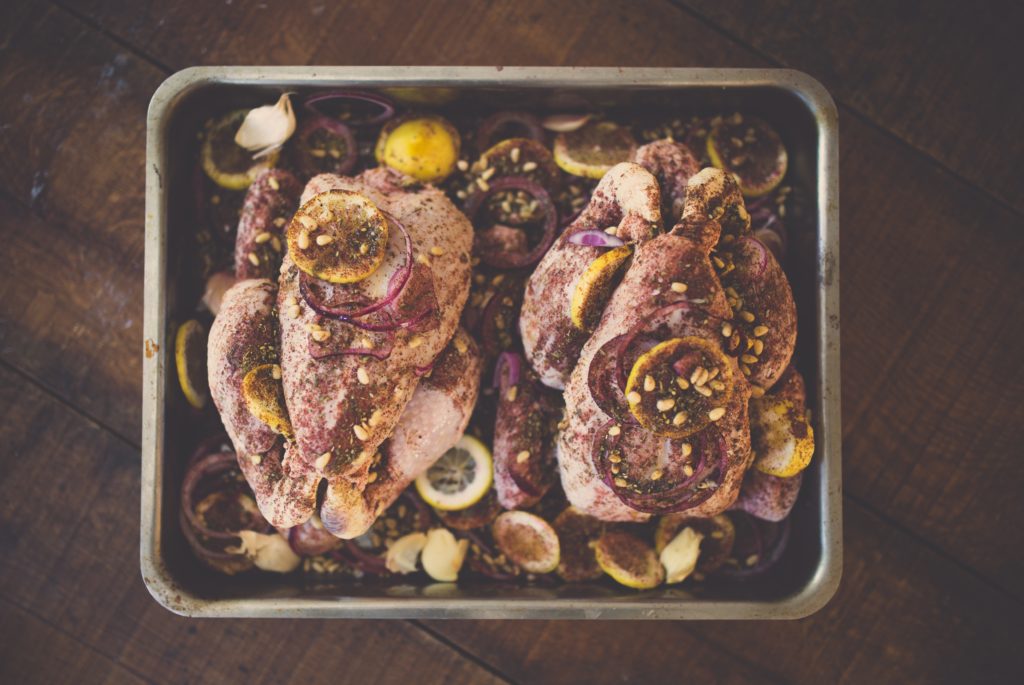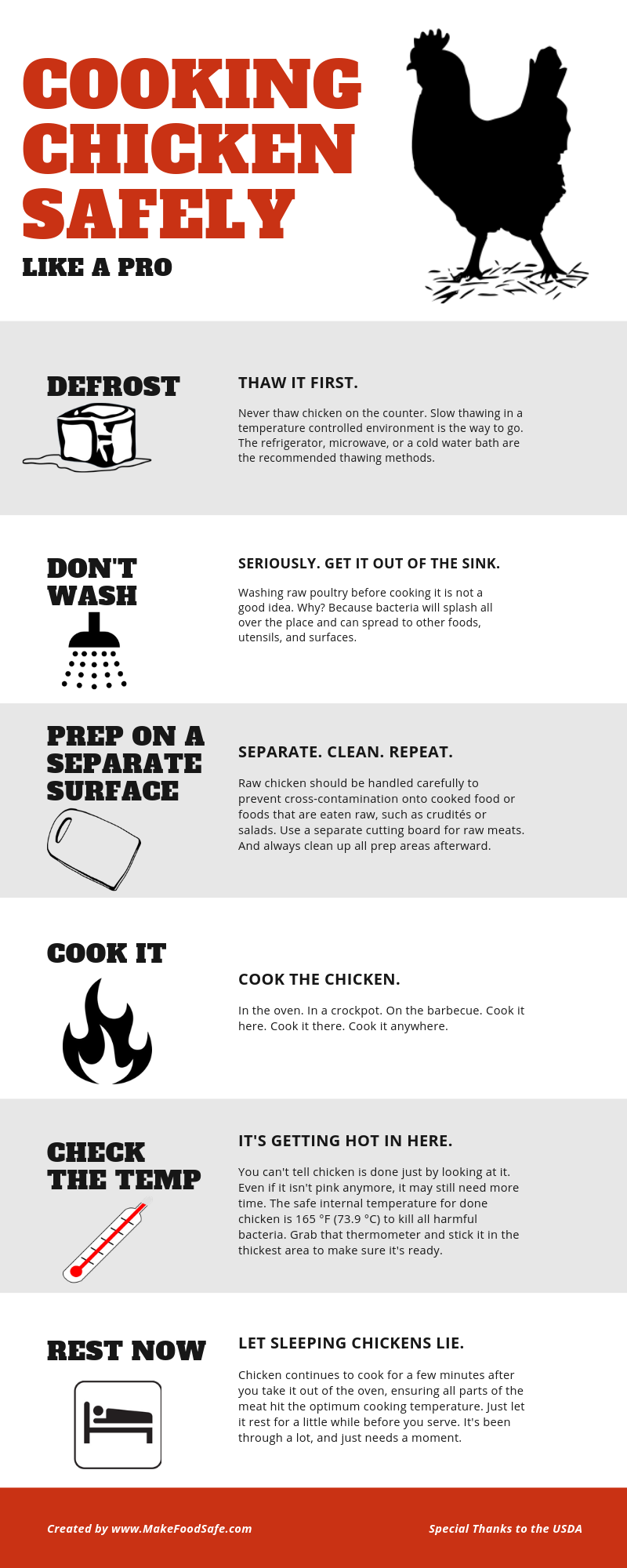All fields are required
Posted in Campylobacter,Salmonella on October 24, 2018

Let’s talk turkey, er… chicken here. Most of us have been taught by our parents that raw chicken can be an illness waiting to happen. If you grew up in my home, your mother would have told you that raw chicken has germs, and you need to wash your hands every single time you touch it. Every. Single. Time. That’s a lot of handwashing for a young kid who is curious. Most of us know we need to separate it from other foods, and that it should be cooked all the way before it is eaten. But that is not necessarily what is scaring us. With all of the Salmonella outbreaks this year alone and the statistics showing Campylobacter is in the majority of chicken products in the UK, we are all kind of freaked out. Are we cooking chicken the right way? How can we keep our families safe? Should I throw the chicken away? Should I just stop eating chicken all together?
These are the normal questions I hear all the time from my family, my clients, my friends, and even the concerned individual who has called our office number after hearing about the latest foodborne illness outbreak linked to chicken. Chicken can be concerning. But there are ways to make it less so.
Consumer Reports conducted an analysis of more than 300 raw chicken breasts they purchased from various retail stores across the United States. What they found was shocking. In 97% of chicken breasts, they found potentially harmful bacteria, including the organic brands. Poultry actually contributes to more foodborne illness deaths in the United States than any other meat commodity, according to the Centers for Disease Control and Prevention. The UK reports that 60% of chickens sold in the country tested for campylobacter during their recent analysis. Now we are seeing Salmonella superbugs in raw chicken products causing nationwide outbreaks. And superbugs do not pick and choose those who are in the high-risk group to infect. All of us have the same chances when it comes to food poisoning and raw chicken.
So, the assumption that the chicken you have just placed in your grocery basket is pathogen-free is unrealistic, according to our friends at Consumer Reports. Nothing is ever risk-free, but there are steps you can take to reduce the risks of food poisoning.
The first thing someone asks me when it comes to chicken is how they can make it at home to ensure they don’t make their family sick. Being a mom, a home chef, and a food safety advocate, I can sympathize with this concern. No parent wants their kids to vomit after they have eaten their food. Parents especially do not want a trip to the emergency room over what just needed a few more minutes in the oven.
But despite what our moms told us and our desires to not get our families sick, I still see time and time again fellow home chefs commit food safety no-nos. I see chicken being defrosted on countertops. Frozen chicken put into crockpots before thawing. Raw chicken being cut with the same utensils as veggies. Washing chicken in the sink. Storing raw chicken in the fridge next to ready-to-eat foods. And the worst of them all, serving chicken without checking if it is done first. Good people. Great chefs. Time-tested dishes and recipes. Bad habits.
Some bad habits are old-fashioned tips and tricks. My mother-in-law at one time religiously washed her poultry before she cooked it. Why? Because she wanted to wash away any bacteria. Well, imagine her surprise when I told her the bacteria was still on (or in) the chicken and now was all over her kitchen. Think about shaking up a bottle of soda and opening the can. There is a geyser of carbonated stickiness that is flung across the room, on the floor, on you, on the countertops, on the dog… The same goes for your kitchen when you wash raw poultry. Pathogens end up on the darnedest of places, and likely, you won’t know they are there. So, they grow little colonies of bacteria, while waiting for the moment they can cross-contaminate whatever food item or dish you have in their vicinity. It’s not a pretty picture.
But you see, it isn’t your (or my mother-in-laws’) fault. That’s how we were taught. Chicken should be washed. That’s a lie. Chicken is done when the inside of it is no longer pink. (Another myth. It may still need more time to cook.) Frozen chicken will thaw and cook at the same time while in a crockpot. (Nope. Unless your recipe calls for a little but of campy, it’s a bad idea.)
The good news of this whole story is that there are only subtle tweaks needed to cook chicken the right way. And these tweaks won’t ruin the flavors of grandma’s famous roasted chicken dish. Instead, they will allow you to enjoy it, without all of the worry of foodborne illness.
What are the tricks? We at MakeFoodSafe have made a handy little infographic for you to remember the methods:

Not so scary, right? It’s a lot better than the anxiety of whether to eat or not to eat chicken. (Which I personally believe you still should.) Print this. Please share it. And enjoy your chicken dish knowing that you have cooked it properly.
Bon appetit.
By: Candess Zona-Mendola, Contributing Writer (Non-Lawyer)